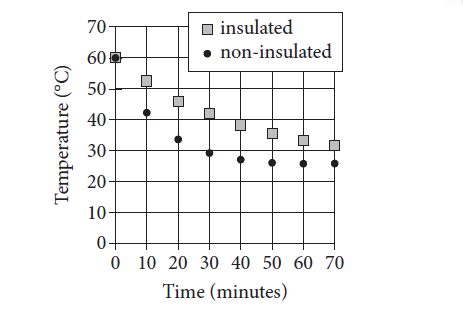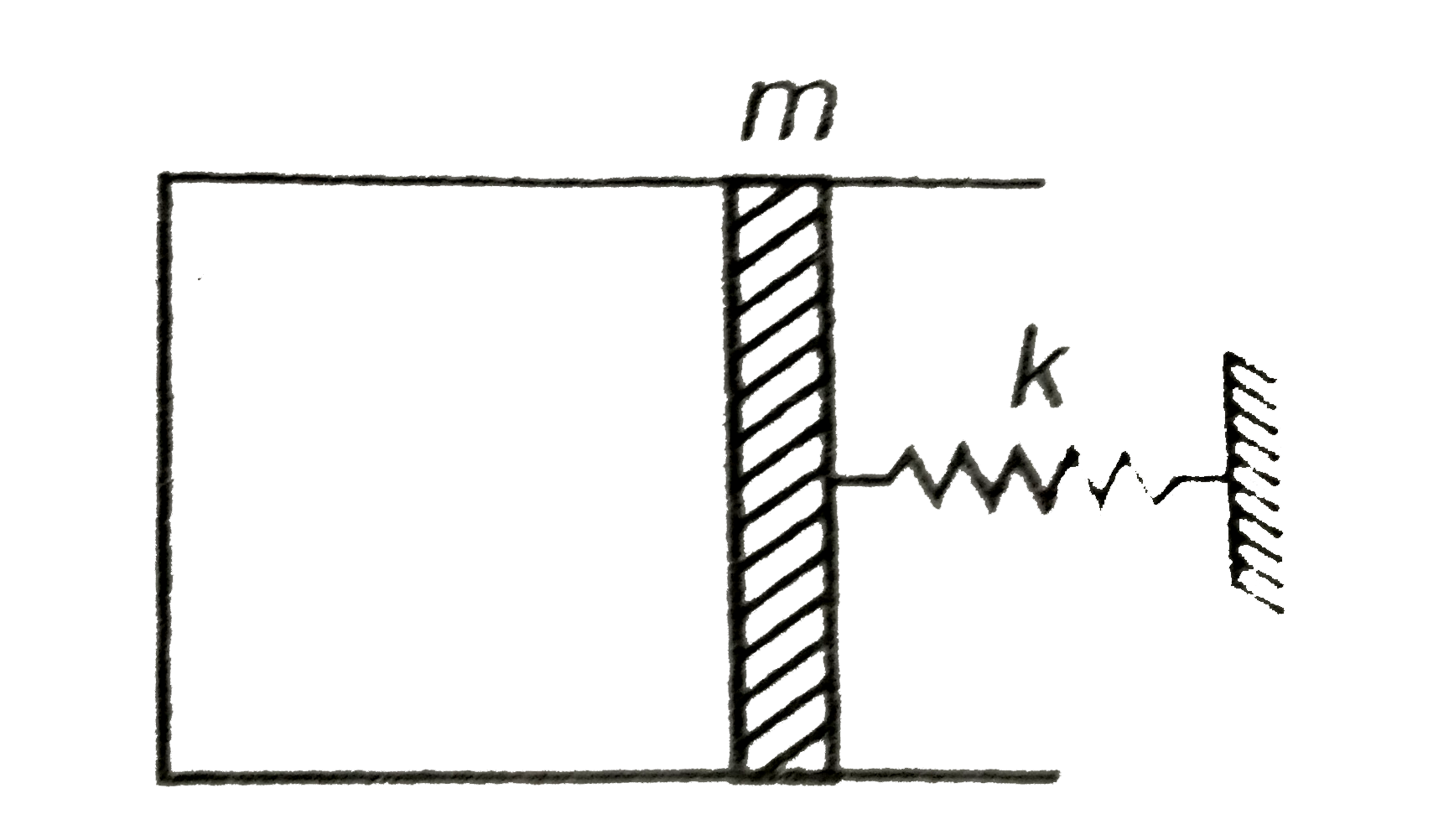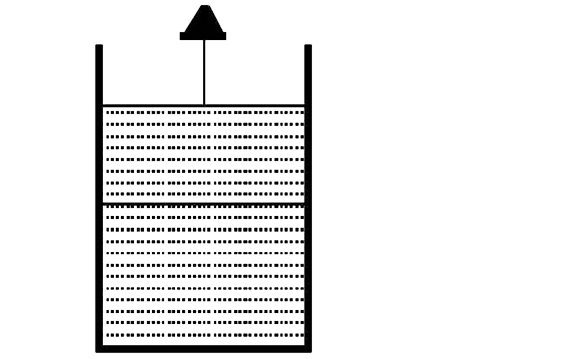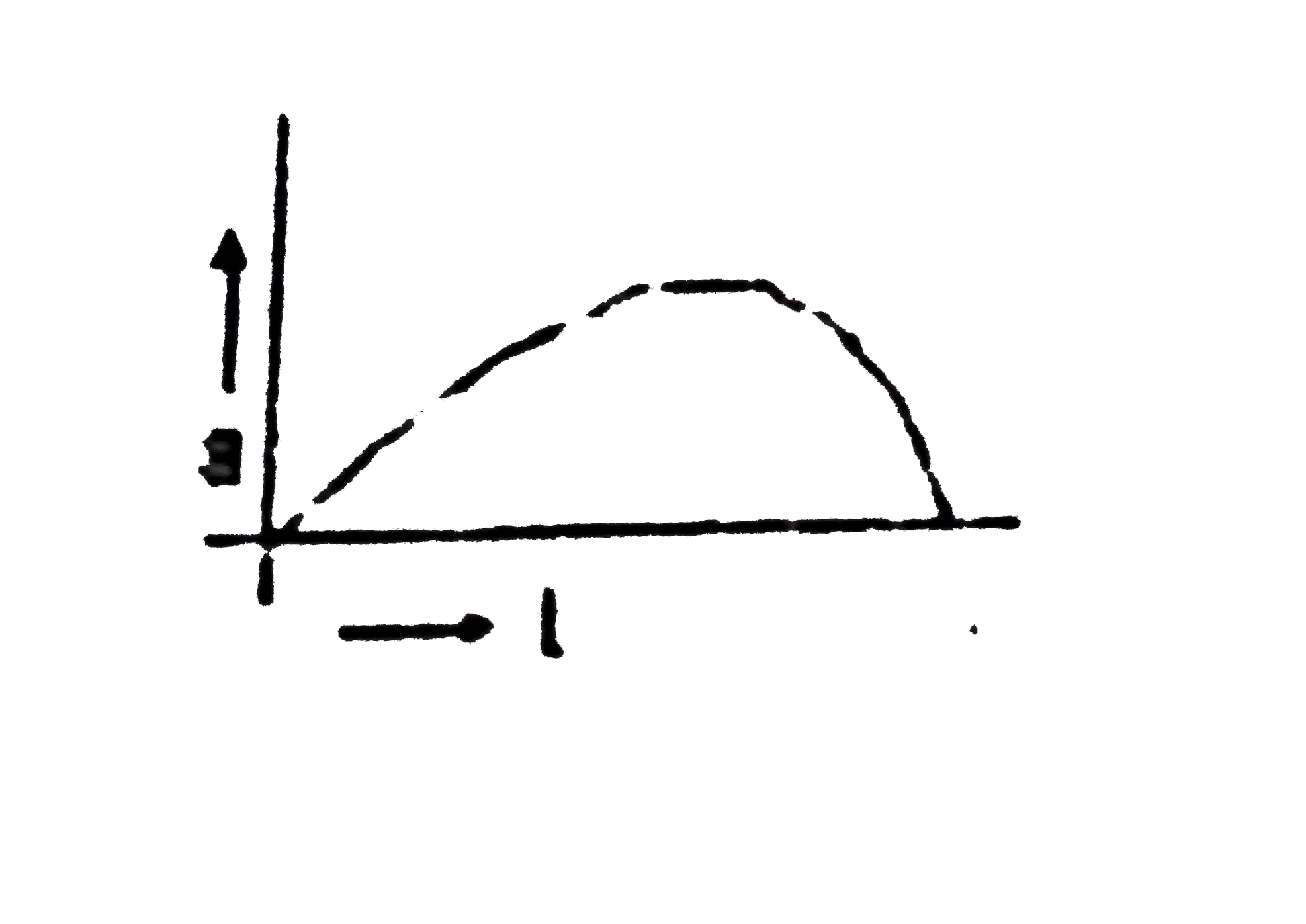A partition divides a container having insulated walls into two compartments whose initial paraments are given. The partition is a conducting wall which can move freely without friction. Which of the following statements is/are correct, with reference to the final equilibrium position ?

The pressure in the two compartments are equal.
Volume of compartment I is 3V/5
Volume of compartment II is 12V/5
Final pressure in compartment I is 5P/3
The correct Answer is:A, B, C, D
In the equilibrium position, the net force on the partition will be zero.
Hence pressure on both sides is same.
Hence, (a) is correct.
n1=P1V1RT1=PVRT
n2=(2P)(2V)RT=4PVRT⇒n2=4n1
Moles remain conserved.
Finally pressure becomes equal in both the parts.
Using, P1V1=n1RT1
P2V2=n2RT2
P1=P2 and T1=T2
V1V1=n1n2=14
V2=4V1
Also, V1+V2=3V⇒V1+4V1=3V
V1=35V and V2=125V
Hence, options (b) and (c) are correct.
In compartement I:
P1'V1=n1RT1
P′1(3V5)=(PVRT)R(T)
P′1=5PV3V=53P
Hence, option (d) is also correct.
Topper's Solved these Questions
- BOOK - CENGAGE PHYSICS ENGLISHCHAPTER - KINETIC THEORY OF GASES AND FIRST LAW OF THERMODYNAMICSEXERCISE - Assertion-Reasoning6videos
KINETIC THEORY OF GASES AND FIRST LAW OF THERMODYNAMICS
- BOOK - CENGAGE PHYSICS ENGLISHCHAPTER - KINETIC THEORY OF GASES AND FIRST LAW OF THERMODYNAMICSEXERCISE - Comprehension56videos
KINETIC THEORY OF GASES AND FIRST LAW OF THERMODYNAMICS
- BOOK - CENGAGE PHYSICS ENGLISHCHAPTER - KINETIC THEORY OF GASES AND FIRST LAW OF THERMODYNAMICSEXERCISE - Single Correct140videos
KINETIC THEORY OF GASES AND FIRST LAW OF THERMODYNAMICS
- BOOK - CENGAGE PHYSICS ENGLISHCHAPTER - KINETIC THEORY OF GASESEXERCISE - Compression2videos
KINETIC THEORY OF GASES
- BOOK - CENGAGE PHYSICS ENGLISHCHAPTER - LINEAR AND ANGULAR SIMPLE HARMONIC MOTIONEXERCISE - Single correct anwer type14videos
LINEAR AND ANGULAR SIMPLE HARMONIC MOTION
Similar Questions
A thin-walled spherical conducting shell S of radius R is given charge Q. The same amount of charge is also placed at its center C. Which of the following statements are correct?
View SolutionA thermally insulated piston divides a nonconducting container in two compartements, right compartement of 2V,T and 2P, while in the left compartement the respective values are V,T and P. Total moles in total system of both comartments is 5 moles. if piston can slide freely, and in the final equilibrium position, volume of right compartement is xV5 then find the value of x.
View Solution
Knowledge Check
- Question 1 - Select One
Refer to the given figures showing two types of glands

Which of the following statements regarding these glands is not correct ?AThese are the multicellular glands which pour their secretion directly through ducts at the site of actionBSebaceous glands present in human skin are 'P' type of glandsCBrunner's glands of human intestine and sweat glands of human skin are 'Q' type of glandsDIn 'P' type of glands, secretory intestine and sweat of flask like structure where in 'Q' type of glands, secretory portion is both tubular and flask shaped. - Question 2 - Select One

Two samples of water of equal mass are heated to 60 degrees Celsius (°C). One sample is poured into an insulated container, and the other sample is poured into a non-insulated container. The samples are then left for 70 minutes to cool in a room having a temperature of 25°C. The graph above shows the temperature of each sample at 10-minute intervals. Which of the following statements correctly compares the average rates at which the temperatures of the two samples change?AIn every 10-minute interval, the magnitude of the rate of change of temperature of the insulated sample is greater than that of the non-insulated sample.BIn every 10-minute interval, the magnitude of the rate of change of temperature of the non-insulated sample is greater than that of the insulated sample.CIn the intervals from 0 to 10 minutes and from 10 to 20 minutes, the rates of change of temperature of the insulated sample are of greater magnitude, whereas in the intervals from 40 to 50 minutes and from 50 to 60 minutes, the rates of change of temperature of the non-insulated sample are of greater magnitude.DIn the intervals from 0 to 10 minutes and from 10 to 20 minutes, the rates of change of temperature of the non-insulated sample are of greater magnitude, whereas in the intervals from 40 to 50 minutes and from 50 to 60 minutes, the rates of change of temperature of the insulated sample are of greater magnitude.
An ideal gas is enclosed in a thermally insulated container. Container is covered by an insulating piston which is connected with spring. Small displacement is given to piston as shown in figure. Which of the following statements is correct? Neglect friction everywhere.
 View Solution
View SolutionIn the figure, a container is shown to have a movable (without friction) piston on top. The container and the piston are all made of perfectly insulated material allowing no heat transfer between outside and inside the container. The container is divided into two compartments by a rigid partition made of a thermally conducting material that allows slow transfer of heat. The lower compartment of the container is filled with 2 moles of an ideal monoatomic gas at 700K and the upper compartment is filled with 2 moles of an ideal diatomic gas at 400K. The heat capacities per mole of an ideal monoatomic gas are CV=32R,CP=52R, and those for an ideal diatomic gas are CV=52R,CP=72R,

Consider the partition to be rigidly fixed so that it does not move. When equilibrium is achieved, the final temperature of the gasses will beView SolutionIn the figure, a container is shown to have a movable (without friction) piston on top. The container and the piston are all made of perfectly insulated material allowing no heat transfer between outside and inside the container. The container is divided into two compartments by a rigid partition made of a thermally conducting material that allows slow transfer of heat. The lower compartment of the container is filled with 2 moles of an ideal monoatomic gas at 700K and the upper compartment is filled with 2 moles of an ideal diatomic gas at 400K. The heat capacities per mole of an ideal monoatomic gas are CV=32R,CP=52R, and those for an ideal diatomic gas are CV=52R,CP=72R,

Consider the partition to be rigidly fixed so that it does not move. When equilibrium is achieved, the final temperature of the gasses will beView SolutionA particle is moving in a straight line whose acceleration versus time graph is given. Assume that initial velocity is in the direction of acceleration. Then
which of the statement is correct between time t=0 to t=t0.
 .View Solution
.View SolutionA horizontally force of 12 N pushes a 0.5kg book against a vertical wall. The book is initially at rest. If the coefficent of friction are μk=0.6 and μs=0.8 which of the following statements is true?
View SolutionA ring shaped tube contain two ideal gases with equal masses and molar masses M1=32andM2=28.
The gases are separated by one fixed partition P and another movable stopper S which can move freely without friction inside the ring. The angle α as shown in the figure is ...... degrees.
 View Solution
View Solution

